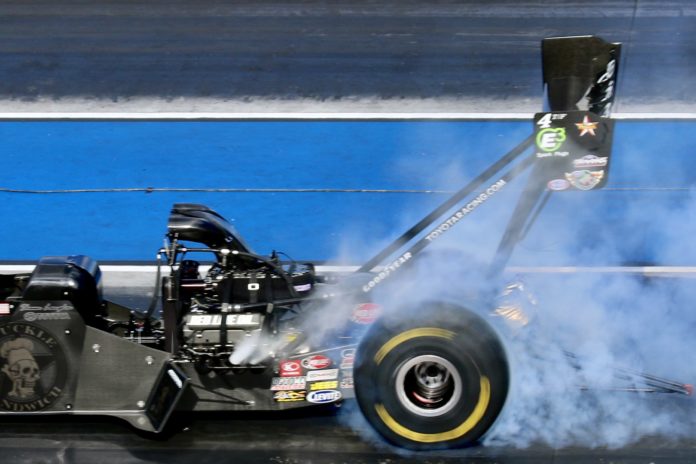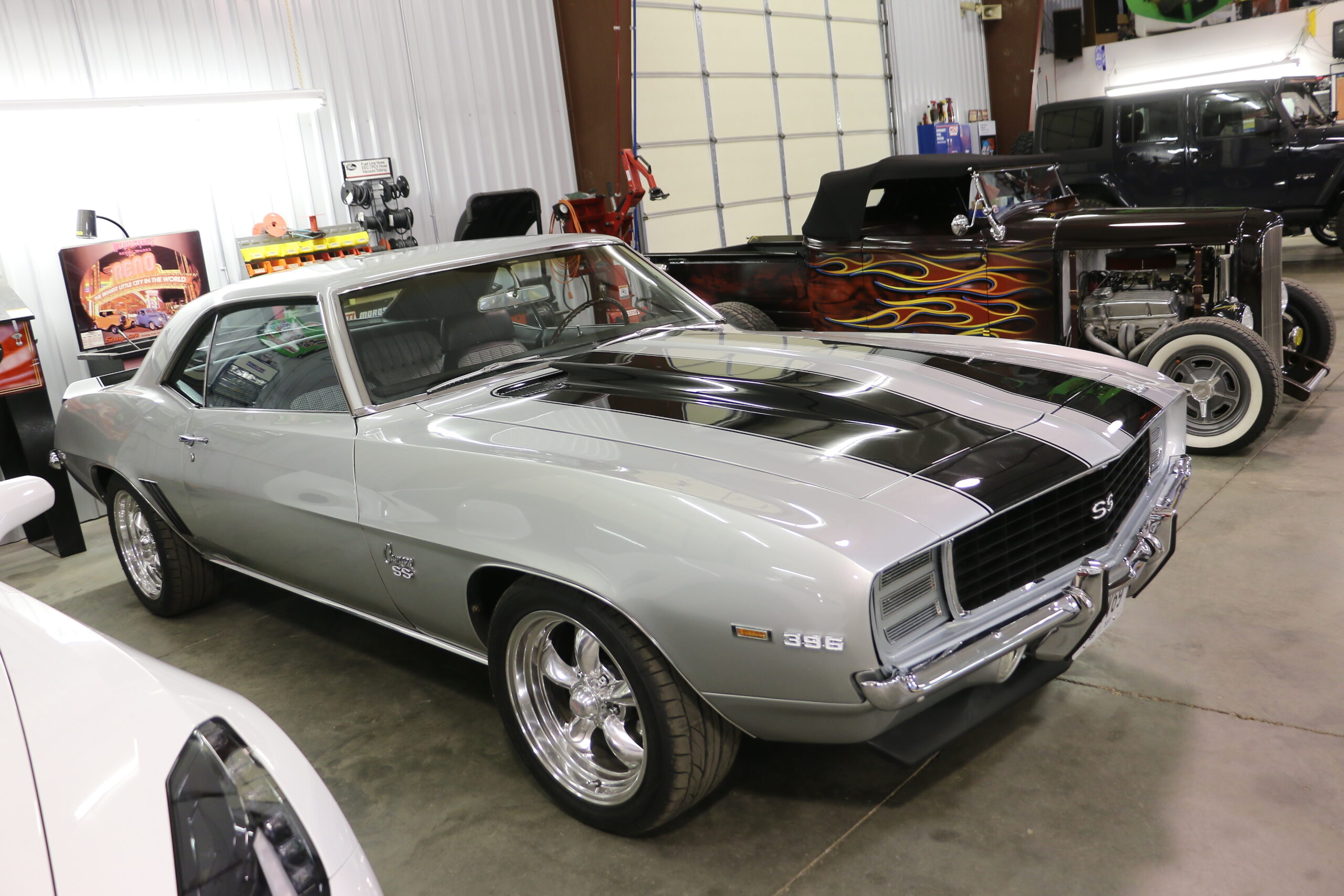Drag racing, huh? So, what’s the big deal? You hammer the throttle and go straight for a whole quarter of a mile. Easy. Not so fast! A lot happens in that short time and a lot happens before the actual “pass”.
Let’s start with the burnout. We will assume your car and driver are ready to go. We will also assume that you have slicks on the car, or at a minimum D.O.T. approved, street legal slicks. Cars using a treaded tire are not allowed in the burnout box. As you drive the car by the announcing station your car number is noted so it can be entered into the computer. You are then directed to stop and wait for clearance to proceed to the burnout box. When cleared, you drive the car through a slight depression in the concrete that holds a small amount of water. The burnout box is a rectangle about six feet by twelve feet wide. Either a crew member or a track employee will motion for you to stop with the rear tires just past the water or possibly with the tires barely in the water. It’s a matter of preference. Whatever works best for you. The tire contact surface is now wet and you are ready for the burnout.
In the old days water was not used, but instead bleach was used. Yeah, Clorox or your brand of choice. A crew member would pour bleach in front of the rear tire and the burnout would proceed, creating the same conditions that water creates, except the bleach would soften the tires for better traction. Back in the day, there was not much, if any choice, in rubber compounds. You could not order a stiff sidewall tire with a soft surface compound. You had to soften them up yourself and bleach was the technology of the day. It also created a really nasty odor that was likely not healthy.
Depending on the type of vehicle you are driving, there are two types of burnouts: Static and motion. Let’s assume you are driving a “door” car with four wheel brakes. You will be required to do a static burnout. Here ya go. Most cars with front brakes use a device called a line-lock. What this does is to separate, momentarily, the front brake hydraulic system from the overall brake system. With the car still in the burnout box, you put the car in neutral and pump and hold the brakes to achieve full pressure and engage the line lock. You then let up on the brake pedal, while still pushing on the line lock button, engage the transmission and, viola!, the car does not move. The front brakes are holding it, leaving the rear brakes disengaged. At the signal of the starter to “wind ‘em up”, you press the throttle causing the rear tires to spin. You might start in low and shift to high gear during the burn-out or just pick a gear and stay with it until the burn out is complete. Typically you will spin the tires so rapidly that they smoke and get hot. After the desired amount of time, (it’s up to you, but a few seconds will generally do it) keep the gas pedal depressed and release the line lock button and the car will then proceed forward. Don’t keep your foot in it too long, because you have to stop before you get to the starting line. If you cross it, you will get ugly looks from the starter and a stern warning not to do it again. If you do it again you might be invited to go to another racetrack.
So, what’s the difference between a static and a motion burnout? Not much. Except in a motion burnout the vehicle typically has only rear brakes. There is no line lock to engage, so the vehicle cannot be locked during the burnout. The procedure is the same except you press the accelerator, in your choice of gears, spin the tires, create tire heat, but without the benefit of front brakes it is difficult to stop the car prior to the starting line. As you begin the burnout and proceed forward you will lay a patch of rubber on the track. The newly formed patch of rubber is hot and sticky. No, not THAT kind of hot and sticky! Sheesh. Ideally after you cross the starting line, you stop and back up into the same hot patch of rubber you just laid down. Why? Hot tire, hot patch of rubber equals traction. Traction is reduced elapsed time and that is what you are wanting.
If there is a door car in the other lane, and you are driving a dragster, you will be directed to complete the burnout first, then the door car will be allowed to proceed. This is really a safety issue because almost anything can happen…….brake failure, stuck throttle and the like could cause one of the vehicles to cross into the other lane. If your dragster does the burnout first and backs up, you are out of the way should something go wrong with the other car.
So, really, what have you done here? Besides waste fossil fuels, pump hydrocarbons into the air as well as rubber particles and create tire wear, what did you really do? Well, there is noise pollution, plus the added benefit of the smell of burning rubber and race fuel. I love the smell of nitromethane in the morning. Sorry. You cleaned the tires, created heat in the tires for improved traction. This will improve the launch when it is time to go. Just hammer the throttle, spin the tires. Yeah, so? When I first began drag racing, I was told how to do the burnout. Sheesh, any idiot can do it I thought. Well, apparently, it takes a special idiot to get everything in the proper sequence, for the proper amount of time. I have now become a special idiot. You can become that special idiot as well. How? Same way you get to Carnegie Hall. Practice, practice, practice.
See you at the races. I’ll be the special idiot in the blue front engine dragster. Stop by and say hello. No, you can’t drive it.
By Greg Murphy, many time first round runner-up.






